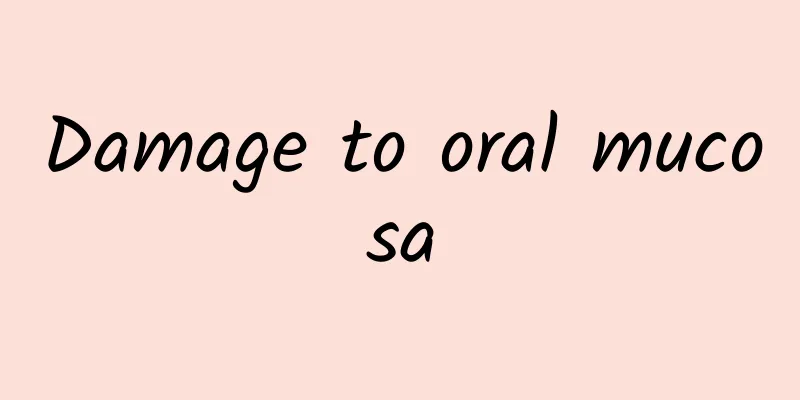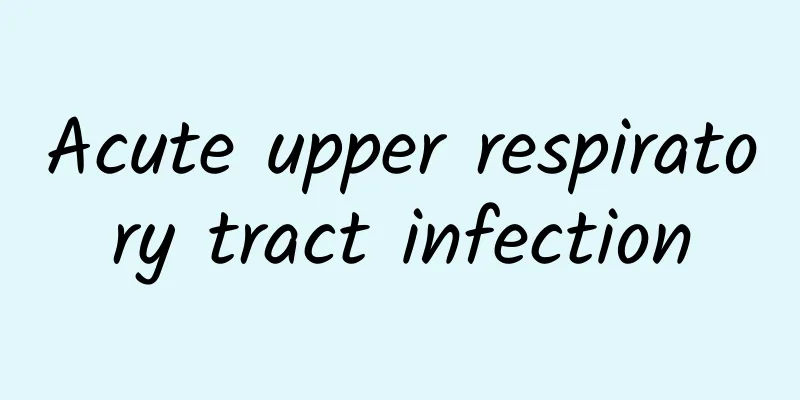What medicine to take during the acute stage of gout

|
Gout is a relatively common disease. Patients may experience joint pain and swelling, and there is no good relief effect. Faced with this situation, we should go to the hospital for treatment in time. At the same time, we should pay attention to eating more vegetables and fruits and less spicy and greasy food in our daily life. This will have a certain effect on alleviating the onset of gout and improving our physical condition. So, what medicine should you take during the acute phase of gout? 1. During the acute attack of gout, it is recommended to carry out anti-inflammatory and analgesic treatment as soon as possible (generally within 24 hours) (recommendation level: 2B) During the acute attack of gout, early (within 24 hours) targeted use of nonsteroidal anti-inflammatory drugs (NSAIDs), colchicine and glucocorticoids can effectively fight inflammation and relieve pain, thereby improving the patient's quality of life. 2 During an acute attack of gout, it is recommended to first use NSAIDs to relieve symptoms (recommendation level: 1B) When gout attacks acutely, the first thing to consider is to relieve the patient's clinical symptoms. Currently, there is only indirect evidence comparing the relative efficacy and safety of different nonselective NSAIDs in the treatment of gout. Selective cyclooxygenase 2 (COX-2) inhibitors can inhibit COX-2 more specifically, reduce side effects such as gastrointestinal damage, and can be used for patients with high-risk factors for the digestive tract. 3. During the acute attack of gout, for patients who are contraindicated to NSAIDs, it is recommended to use low-dose colchicine alone (recommendation level: 2B) High-dose colchicine (4.8-6.0 mg/d) can effectively relieve the clinical symptoms of patients in the acute stage of gout, but its incidence of gastrointestinal adverse reactions is high and it is easy for patients to stop taking the drug due to adverse reactions. There was no statistically significant difference in effectiveness between low-dose colchicine (1.5-1.8 mg/d) and high-dose colchicine; in terms of safety, the incidence of adverse reactions was lower. Low-dose colchicine is more effective when taken within 48 hours. 4. During the acute attack of gout, short-term use of glucocorticoids alone has similar efficacy and safety to NSAIDs (recommendation level: 2B) For patients with acute gout, short-term use of glucocorticoids alone (30 mg/d, 3 days) can have the same effective analgesic effect as NSAIDs, with good safety, especially for patients with acute gout who are intolerant to NSAIDs and colchicine. 5. Uric acid-lowering therapy is recommended for patients with frequent acute gouty arthritis (>2 times/year), chronic gouty arthritis, or tophi (recommendation level: 1B) The goal of uric acid-lowering therapy is to prevent acute relapses of gouty arthritis and the formation of tophi and to help dissolve tophi. Stabilizing the patient's blood uric acid level below 360 μmol/L (6 mg/dl) can help relieve symptoms and control the disease. Studies have shown that allopurinol, benzbromarone, allopurinol combined with benzbromarone, febuxostat, and pegylated recombinant uricase (not yet approved for marketing in my country) can reduce tophi by lowering uric acid. 6. When patients with gout are undergoing uric acid-lowering treatment, allopurinol (recommendation level: 2B) or febuxostat (recommendation level: 2B) are recommended as drugs to inhibit uric acid production; benzbromarone (recommendation level: 2B) is recommended as a drug to promote uric acid excretion. For drugs that inhibit uric acid production, febuxostat has advantages over allopurinol in terms of effectiveness and safety. For drugs that promote uric acid excretion, benzbromarone and probenecid can be used for patients with chronic gout. Benzbromarone is superior to probenecid in terms of efficacy and safety. When using allopurinol, you should start with a low dose. The initial dose for patients with normal renal function is 0.1 g/d. The dose should be lower in patients with renal insufficiency. The dose should be increased gradually and the occurrence of hypersensitivity reactions should be closely monitored. When using benzbromarone, you should start with a low dose, increase your water intake, alkalize your urine, and avoid using it at the same time with other liver-damaging drugs. Doctors should use the above uric acid-lowering drugs in a targeted manner according to the patient's specific situation, and be alert to possible liver and kidney toxicity and other side effects during medication. 7. For gout patients with chronic kidney disease, it is recommended to first evaluate renal function, then use uric acid-lowering drugs with little effect on renal function according to the patient's specific situation, and closely monitor adverse reactions during treatment (recommendation level: 2C) Chronic renal impairment can affect the half-life and excretion period of uric acid-lowering drugs, affect drug metabolomics, and thus affect the effectiveness and safety of uric acid-lowering drugs. Higher blood uric acid levels and urate deposition can affect kidney function. Drugs that inhibit uric acid production (allopurinol and febuxostat) and drugs that promote uric acid excretion (benzbromarone) can both reduce the glomerular uric acid load. When allopurinol is used in patients with renal insufficiency, the initial dose should be lowered, the dose should be increased gradually, and the occurrence of hypersensitivity reactions should be closely monitored. No dose adjustment is required for Febuxostat in patients with mild to moderate renal impairment. Drugs that promote uricosuria should be used with caution in patients with uric acid kidney stones and those with severe renal insufficiency. 8. In the early stages of uric acid-lowering treatment, it is recommended that gout patients use colchicine to prevent recurrence of acute gouty arthritis (recommendation level: 2B) In the early stages of uric acid-lowering treatment, the preventive use of colchicine for at least 3 to 6 months can reduce the acute attacks of gout in gout patients. Small doses of colchicine are highly safe and well tolerated. |
<<: How long is the acute phase of facial paralysis?
>>: Pain around belly button at 28 weeks of pregnancy
Recommend
Can I use eye drops when I am pregnant?
Pregnant women are prone to eye fatigue during pr...
What are the methods to remove acne and acne marks?
At that time, after staying up all night, my face...
How to effectively treat phlebitis
The full name of phlebitis is thrombophlebitis, w...
What are the ways to protect the cervical spine?
I believe that many office workers suffer from ne...
Are woodlice poisonous?
Woodlice are not poisonous, but as an invertebrat...
How to judge whether the abortion is complete after medical abortion
When an unexpected pregnancy occurs, if you do no...
How to deal with an ankle sprain, emergency treatment methods for sprains
Ankle sprain is a very common condition. If you a...
What is the recipe for ginseng and ganoderma wine?
Nowadays, as living conditions have improved, man...
What are the sequelae of cervical fracture?
Although technology has been constantly developin...
What are the effects and functions of motherwort
Motherwort is frequently used by many women. Not ...
Left groin swelling in women
There are often some problems in the groin, which...
What are the reasons why men are afraid of cold?
Many women are afraid of the cold, but some men a...
Treatment of shingles
For friends suffering from shingles, what they ar...
How to deal with baby's earwax
Many parents will find earwax in their children&#...
What kind of tea can nourish the stomach, spleen and kidney
If you want to strengthen the spleen and kidney, ...









